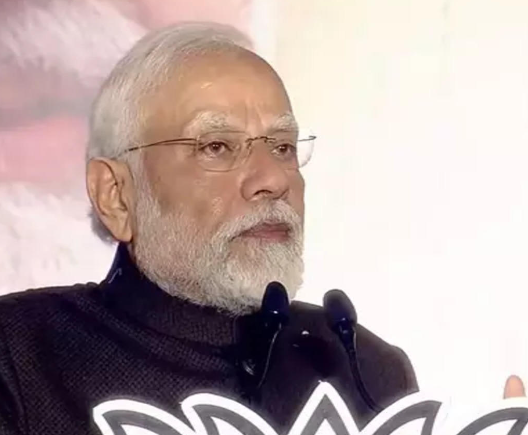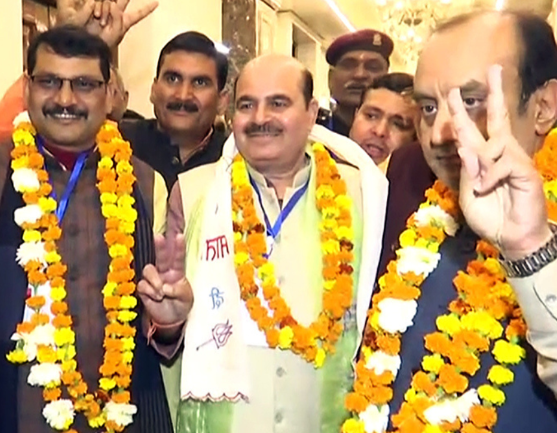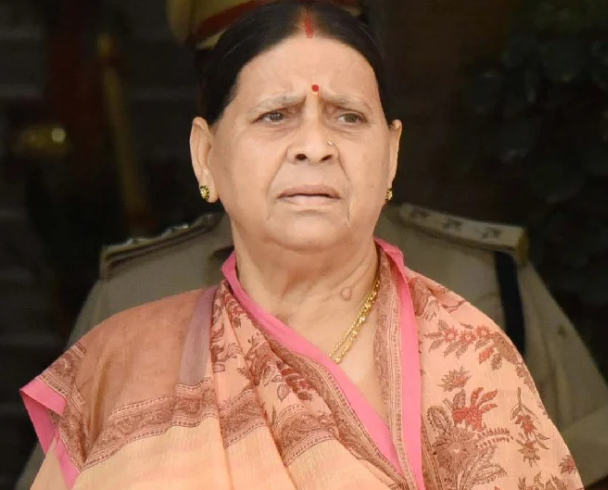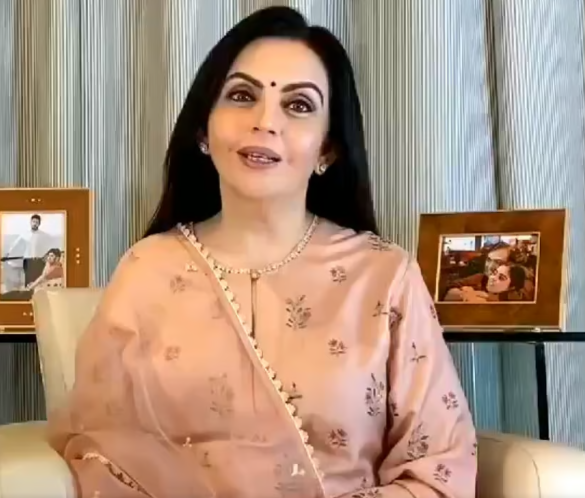
BJP-Led NDA Gains Momentum, Just 4 Seats Away from Commanding Majority in Rajya Sabha Elections
BJP-led NDA Nears Majority with Just 4 Seats Short
In the latest Rajya Sabha elections, the Bharatiya Janata Party (BJP)-led National Democratic Alliance (NDA) is within striking distance of securing a comfortable majority, trailing just four seats shy of the coveted 121-mark in the 240-member House. The BJP clinched victory in 10 Rajya Sabha seats, following an earlier uncontested win in 20 seats, out of the 56 seats that fell vacant in April.

With these 30 newly secured seats, the BJP’s Rajya Sabha tally will surge to 97, while the NDA’s count will escalate to 117 once all 56 newly elected members are sworn in. Maintaining its status as the largest party in the Rajya Sabha, the BJP boasts 97 members, including five nominated MPs who joined the party, with the Congress trailing behind with 29 members.
The Rajya Sabha’s strength will now settle at 240, accounting for five vacancies – four from Jammu and Kashmir and one from the nominated member category.
The Rajya Sabha elections witnessed cross-voting dynamics, particularly notable in the contest for 15 seats across three states. The BJP emerged as the primary beneficiary, securing 10 seats, while the Congress and the Samajwadi Party clinched three and two seats, respectively. Notably, the BJP secured an additional seat in Uttar Pradesh and successfully clinched one in Himachal Pradesh.
In Himachal Pradesh, the unexpected turn of events saw Congress candidate Abhishek Manu Singhvi’s defeat, as six MLAs from the ruling Congress defected during the election. The victory of BJP’s Harsh Vardhan dealt a significant blow to the more than one-year-old Congress government, prompting discussions about the government’s majority status in the assembly.
The Uttar Pradesh Rajya Sabha polls witnessed the BJP securing eight seats, while the Samajwadi Party managed to secure only two out of the three contested seats. The BJP’s notable victors in Uttar Pradesh include former Union Minister RPN Singh, Chaudhary Tejveer Singh, Amarpal Maurya, Sangeeta Balwant, Sudhanshu Trivedi, Sadhna Singh, Naveen Jain, and Sanjay Seth. Additionally, Samajwadi Party’s Jaya Bachchan and Ramji Lal Suman secured victories, with Alok Ranjan suffering a defeat.
In Karnataka, the Congress clinched three seats, and the BJP secured one, with Congress candidates receiving more votes than the party’s strength in the assembly. Notably, BJP MLA ST Somashekar voted in favor of the Congress, reflecting intriguing cross-party dynamics.
The elections in Himachal Pradesh saw a nail-biting contest, with ruling Congress facing a setback as nine MLAs, including six from the party, defected during the election for the lone Rajya Sabha seat. Amidst the intense electoral battle, the outcome was decided by a draw of lots, with Harsh Mahajan emerging victorious over Abhishek Manu Singhvi. Singhvi, in conceding defeat, reflected on the unpredictable nature of human behavior, acknowledging the lessons learned from the electoral process.

Karnataka witnessed a more predictable outcome, with the Congress consolidating its position by winning three out of the four seats contested. The BJP secured one seat, marking a strategic victory for the Congress within its stronghold. However, the electoral landscape was not devoid of surprises, as BJP MLA ST Somashekar’s decision to vote in favor of the Congress candidate added an unexpected twist to the proceedings.
In the aftermath of the elections, the political landscape in several states underwent significant transformations, with power dynamics shifting and alliances being put to the test. The results underscored the fluid nature of political allegiances and the strategic calculations employed by parties to secure their interests. As the dust settles, the ramifications of these electoral outcomes are likely to reverberate across the political spectrum, shaping the trajectory of state politics and influencing future electoral strategies.
Overall, the recent Rajya Sabha elections have not only highlighted the BJP’s growing dominance within the upper house but also underscored the intricate dynamics of coalition politics and the evolving electoral landscape in India. As parties navigate the complexities of power dynamics and electoral strategies, the outcomes of these elections serve as a barometer of political trends and alliances in the country’s ever-evolving political landscape.
For the latest updates-click here.


